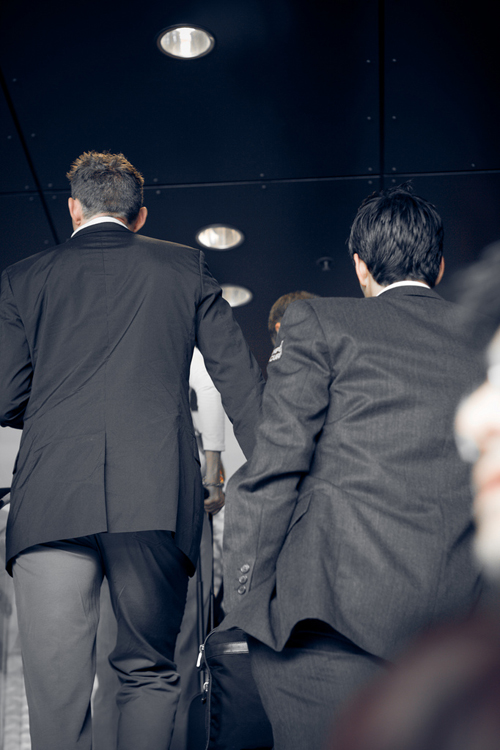| << Chapter < Page | Chapter >> Page > |
In most communities, people interact primarily with others who share the same social standing. It is precisely because of social stratification that people tend to live, work, and associate with others like themselves, people who share their same income level, educational background, or racial background, and even tastes in food, music, and clothing. The built-in system of social stratification groups people together. This is one of the reasons why it was rare for a royal prince like England’s Prince William to marry a commoner.
Symbolic interactionists also note that people’s appearance reflects their perceived social standing. Housing, clothing, and transportation indicate social status, as do hairstyles, taste in accessories, and personal style.


To symbolically communicate social standing, people often engage in conspicuous consumption , which is the purchase and use of certain products to make a social statement about status. Carrying pricey but eco-friendly water bottles could indicate a person’s social standing. Some people buy expensive trendy sneakers even though they will never wear them to jog or play sports. A $17,000 car provides transportation as easily as a $100,000 vehicle, but the luxury car makes a social statement that the less expensive car can’t live up to. All these symbols of stratification are worthy of examination by an interactionist.
Social stratification can be examined from different sociological perspectives—functionalism, conflict theory, and symbolic interactionism. The functionalist perspective states that systems exist in society for good reasons. Conflict theorists observe that stratification promotes inequality, such as between rich business owners and poor workers. Symbolic interactionists examine stratification from a micro-level perspective. They observe how social standing affects people’s everyday interactions and how the concept of “social class” is constructed and maintained through everyday interactions.
Analyze the Davis-Moore thesis. Do you agree with Davis and Moore? Does social stratification play an important function in society? What examples can you think of that support the thesis? What examples can you think of that refute the thesis?
Consider social stratification from the symbolic interactionist perspective. How does social stratification influence the daily interactions of individuals? How do systems of class, based on factors such as prestige, power, income, and wealth, influence your own daily routines, as well as your beliefs and attitudes? Illustrate your ideas with specific examples and anecdotes from your own life and the lives of people in your community.
Davis, Kingsley, and Wilbert E. Moore. “Some Principles of Stratification.” American Sociological Review 10(2):242–249. Retrieved January 9, 2012 ( (External Link) ).
Forbes.com LLC. 2014. "#15 Kobe Bryant." Retrived December 22, 2014 (http://www.forbes.com/profile/kobe-bryant/).
Marx, Karl. 1848. Manifesto of the Communist Party . Retrieved January 9, 2012 ( (External Link) ).
Tumin, Melvin M. 1953. “Some Principles of Stratification: A Critical Analysis.” American Sociological Review 18(4):387–394.

Notification Switch
Would you like to follow the 'Introduction to sociology 2e' conversation and receive update notifications?